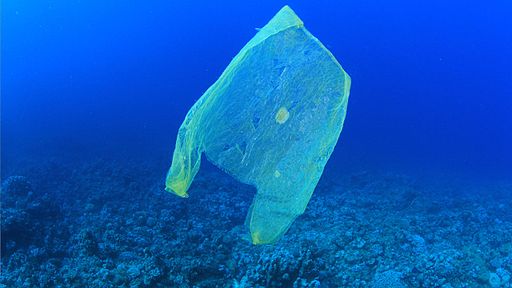
May 2, 2017; Time
In 2011, Ray Dalio bought the Alucia and refurbished the 56-meter (185-foot) yacht to serve as a research vessel. The Alucia is famous for capturing the first video footage of a giant squid filmed in its deep ocean habitat, and for locating the downed Air France Fight 447.
Kjell Inge Røkke, 55, who owns 67 percent of Aker ASA, a Norway-based shipping and offshore drilling conglomerate, just contracted a 181.6-meter (595.8-foot) vessel from a Norway-based shipyard to conduct environmental research missions in partnership with WWF Norway. The ship, REV (short for Research Expedition Vessel), will also be used privately by Røkke and will be available for charters. Here is a brief video of what the REV looks like and what it will do.
Presently, the world’s largest yacht is the Azzam. Two meters longer in length, the REV will be the world’s largest yacht once it is built by 2020. The new research vessel will have a crew of 30, with space for up to 60 scientific staff and laboratories.
Røkke is a self-made man with no secondary or higher education. He asserts that his dyslexia significantly contributed to his success. He started out as a fisherman working on trawlers in Alaska. His rise in buying and restructuring companies returned him to Norway, where he and a partner took over Aker and transformed the 173-year-old company through further mergers and acquisitions.
Røkke is considered one of Norway’s wealthiest citizens (approximately $2.2 billion U.S. dollars). He is apparently known today as much for his flamboyance, temper, and ruthlessness in business as for his wealth. In this 2017 interview (translation needed), Røkke stated that he planned to commit most his wealth to philanthropy. The REV is a major part of that commitment; among many other functions, it will work to clean the oceans of plastic waste.
Sign up for our free newsletters
Subscribe to NPQ's newsletters to have our top stories delivered directly to your inbox.
By signing up, you agree to our privacy policy and terms of use, and to receive messages from NPQ and our partners.
“Sea covers 70 percent of Earth’s surface and much is not researched,” he said. Among other things, Røkke’s ship will remove up to five tons of plastic daily from the ocean and melt it down so it can do no harm.
Røkke’s partnership with WWF-Norway will be challenging as much as it will be a boon to the advancement of WWF’s mission.
“We are far apart in [our] views on oil, and we will continue to challenge Røkke when we disagree with him,” WWF chief Nina Jensen told Aftenposten, “but in this project we will meet to collectively make a big difference in the environmental struggle.”
It may very well take flamboyance, anger, risk-taking, and ruthlessness to conquer the plastic polluting the oceans. What’s called the Great Pacific garbage patch (there are more garbage patches in other oceans) is poisoning 0.4 percent to 8 percent of the Pacific Ocean. Currents move and trap floating debris in “the patch.”
Once the REV gets underway and Røkke begins to delight in all that plastic being removed and recycled, he may find that the larger battle for him will be advocating for more international regulations and working to stem the flow of plastic into the ocean from coastal sources. WWF will surely help him with all that as well.
Roekke apparently spent 23 days in prison for bribery. The article referenced above reports that once he was set free, he gave his cellmates $3,000 worth of takeout pizza. That’s touching, but WWF will surely be expecting many more zeroes each and every year to be added to Røkke’s largesse for the success of REV’s mission.—James Schaffer













